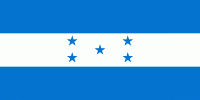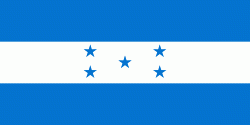Bay Islands Department (Departamento de Islas de la Bahía)
 |
The Bay Islands consist of eight islands and 53 small cays lying 10 mi to 40 mi off the northern coast of Honduras. These islands have been administered as a department of the Republic of Honduras since 1872. Located on the Caribbean Sea, not far east of the entrance to the Gulf of Honduras, they are clearly visible from the mountainous mainland.
The total surface area of the islands is 250 km2. In 2013, they had an estimated population of 71,500 people. The islands comprise three separate groups:
* 1) Swan Islands are the northernmost island group of the 3.
* 2) Islas de la Bahía (with the main islands Roatán, Guanaja and Utila, and numerous satellite islands) are 120 km to the south.
* 3) Cayos Cochinos are the southernmost island group of the 3.
Roatán is the largest island, with a length of about 40 mi and a maximum width of 9 mi at its widest point. Roatán is characterized by its mountainous backbone, composed of hilltops that run west-to-east across the entire island. These hilltops are often crowned by outcrops of exposed metamorphic rocks such as marble, amphibolite, and serpentine. The island's southern coast has an abundance of deep ports and wide inlets, or 'bights', protected by reefs, while its northern coast is, save for a few narrow passages, largely inaccessible, due to extensive coral reef growth.
The island of St. Helena has been described as a virtual extension of Roatán, since it is separated only by a long stretch of mangrove swamp. This island has a small elevated hill at its center, and is characterized by a large number of caves, most of which are located along a cliff on its western end.
Guanaja is the second largest island and is even more mountainous than Roatán. Geographically it features a series of hills, the highest of which rises to over 350 m above sea level, which is the highest elevation present in the Bay Islands. Alluvial plains characterize the areas between the hills.
Utila is third in size and is characterized by low mangrove swamps and a few small, low hills on its eastern end. The soils on this island are uncharacteristically fertile, perhaps owing to the islands's flat topography as well as volcanic tuffs and basalt lavas through coralline limestone.
Map - Bay Islands Department (Departamento de Islas de la Bahía)
Map
Country - Honduras
 |
 |
| Flag of Honduras | |
Honduras was home to several important Mesoamerican cultures, most notably the Maya, before the Spanish colonization in the sixteenth century. The Spanish introduced Catholicism and the now predominant Spanish language, along with numerous customs that have blended with the indigenous culture. Honduras became independent in 1821 and has since been a republic, although it has consistently endured much social strife and political instability, and remains one of the poorest countries in the Western Hemisphere. In 1960, the northern part of what was the Mosquito Coast was transferred from Nicaragua to Honduras by the International Court of Justice.
Currency / Language
| ISO | Currency | Symbol | Significant figures |
|---|---|---|---|
| HNL | Honduran lempira | L | 2 |
| ISO | Language |
|---|---|
| ES | Spanish language |















